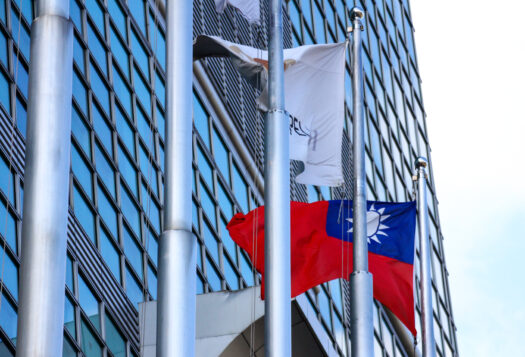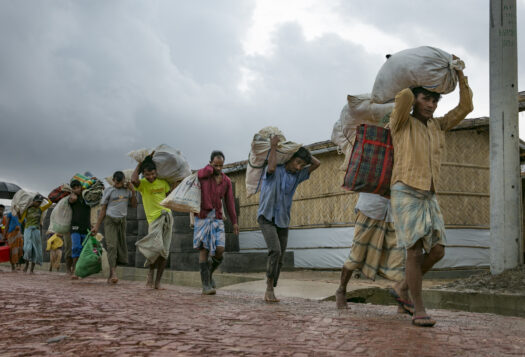A contemporary analysis of India-Pakistan relations would be incomplete without considering the body language of South Asian leadership. Observers of India-Pakistan relations can use the body language of the respective heads of state of both India and Pakistan as a tool to predict the course of India-Pakistan relations, at least in the short-term. Predictions based exclusively on body language can sometimes go awry, but focusing on details usually reveals more interesting behind-the-scenes dynamics of India-Pakistan relations. This is evident by meetings between Pakistani Prime Minister Nawaz Sharif and his Indian counterpart Narendra Modi during 2014-2015 and by observing how the body language of both leaders can set the tone for India- Pakistan relations.
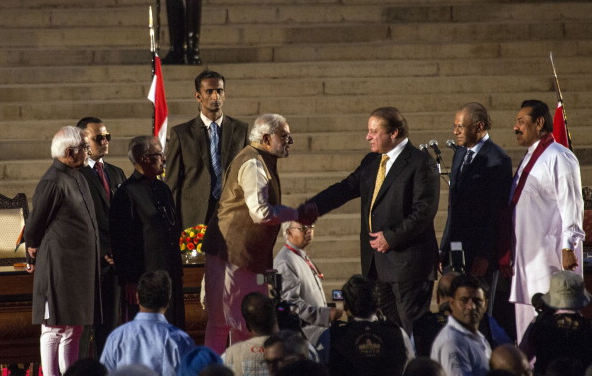
The body language in this photograph prompted observers to become optimistic about “new beginnings” in India -Pakistan relations. Diplomats however downplayed the hype and advised that Pakistan should have “minimum expectations” from the new government. As expected, ceasefire violations on either side of the LoC and a subsequent blame game between both countries soon resulted, causing a downward trend in bilateral relations. In August 2014, India cancelled Foreign Secretary-level talks after Pakistani High Commissioner Abdul Basit met Kashmiri separatist leaders. The two Foreign Secretaries would have met after a hiatus of two years in the bilateral dialogue process.
The November 2014 SAARC Summit in Kathmandu provided Prime Ministers Narendra Modi and Nawaz Sharif with a chance to hold a bilateral meeting and resolve their differences. Neither leader, however, chose to avail the opportunity. The body language of both leaders at the summit made headlines once again.
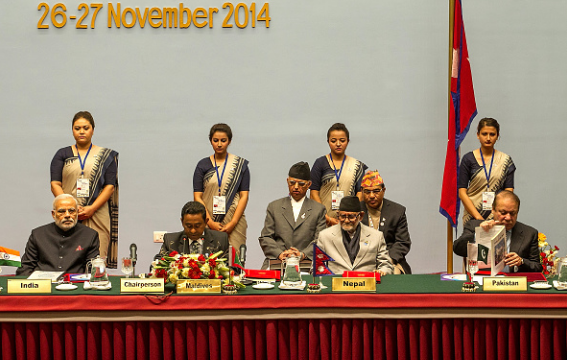
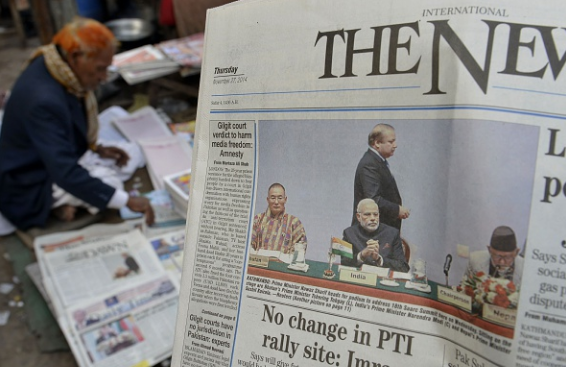
Headlines in most newspapers highlighted how the two leaders had maintained a distance and that there were no prospects of a structured meeting between them. Yet, the mood at the concluding ceremony was very different from the previous day. At the concluding ceremony of the SAARC Summit however, both leaders finally decided to acknowledge each other and shook hands (see here for photo). Notwithstanding vehement denials from both India and Pakistan about such a meeting actually taking place, the changing mood in the photographs lends credence to the fact that both leaders did meet secretly. According to a Hindustan Times report, Indian steel magnate Sajjan Jindal had arranged the meeting at Modi’s request. Modi said that he was keen to reopen formal channels, but “circumstances” did not permit him to do so. Similarly, Sharif spoke about constraints imposed on him by the Pakistani military establishment.
A few months later in July 2015, the Modi-Sharif handshake in Ufa (see here for photo), Russia on the sidelines of the SCO (Shanghai Cooperation Organization) Summit raised hopes for better India-Pakistan relations and a possible resumption of the formal dialogue process. Diplomats termed the meeting a “positive development,” but they did not give any indication towards the continuation of dialogue between both countries.
Almost five months after the SCO Summit, the latest meeting between Sharif and Modi is being touted as a “climate changing” event. According to reports, the two leaders shook hands and talked animatedly for a few minutes at the COP21 in Paris.
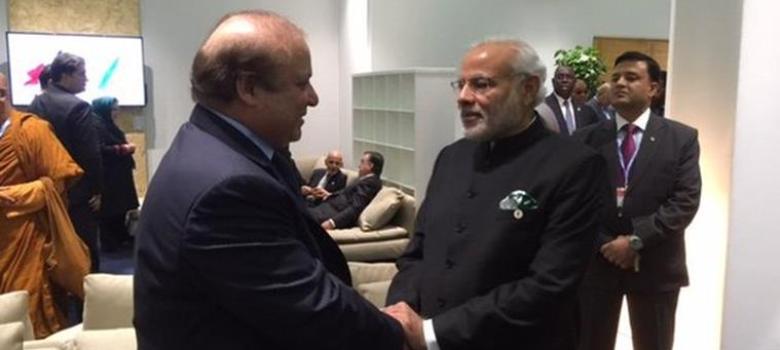
Paris Climate Summit 2015: PM Narendra Modi meets Pak PM Nawaz Sharif at COP 21 in Paris.
Contrary to the meeting in Ufa, the meeting in Paris had not been planned in advance, nor had there been requests for meetings sent to each other. Held in a cordial atmosphere, it was termed a “positive and happy occasion.” The Paris meeting came days before a proposed December 2015 India-Pakistan cricket series in Sri Lanka agreed upon between the two cricket boards. Additionally, Indian External Affairs Minister Sushma Swaraj was invited for the “Heart of Asia” conference on Afghanistan in Islamabad on December 9, 2015.
Giving a thumbs up to the Modi- Sharif meeting, the Shiv Sena Indian political party is busy touting Modi’s magnanimity in shaking hands with Sharif, even as “India expects Pakistan to spew venom in return.” According to the Shiv Sena, the ball is now in Pakistan’s court to take the “next step for bringing an end to the hostility between the two Asian neighbors.”
From my perspective however, the ball still remains in India’s court. While in Islamabad to attend the “Heart of Asia” Conference, Sushma Swaraj announced Modi’s decision to attend the 2016 SAARC Summit in Pakistan. However, she chose to remain quiet about the proposed cricket series. Pakistan’s cricket board expressed its disappointment in India’s decision to not honor its commitment and said that any chance of it taking place was over.
It may be easy to blame Pakistan for the problems in South Asia, but there is also a need for India to rethink its own policy vis-à-vis Pakistan. Swaraj’s visit to Islamabad and Modi’s proposed visit are significant decisions that India has taken in order to ease tensions with Pakistan. Nonetheless, agreeing to the cricket match series would have been very beneficial in reassuring Pakistan about positive Indian intentions. It would have also served to remove the resentment in Pakistan that had surfaced following India’s announcement to severe cricketing ties with Pakistan. Body language between Modi and Sharif can serve as a unique indicator to narrate India-Pakistan relations. It will continue to be useful when observing bilateral relations, and especially beneficial to watch out for during Modi’s proposed visit to Pakistan next year.
***
Image 1: Udit Kulshrestha-Bloomberg, Getty
Image 2: Narendra Shrestha, Getty
Image 3: Arif Ali-AFP, Getty
Image 4: Vikas Swarup-MEAIndia, Twitter

